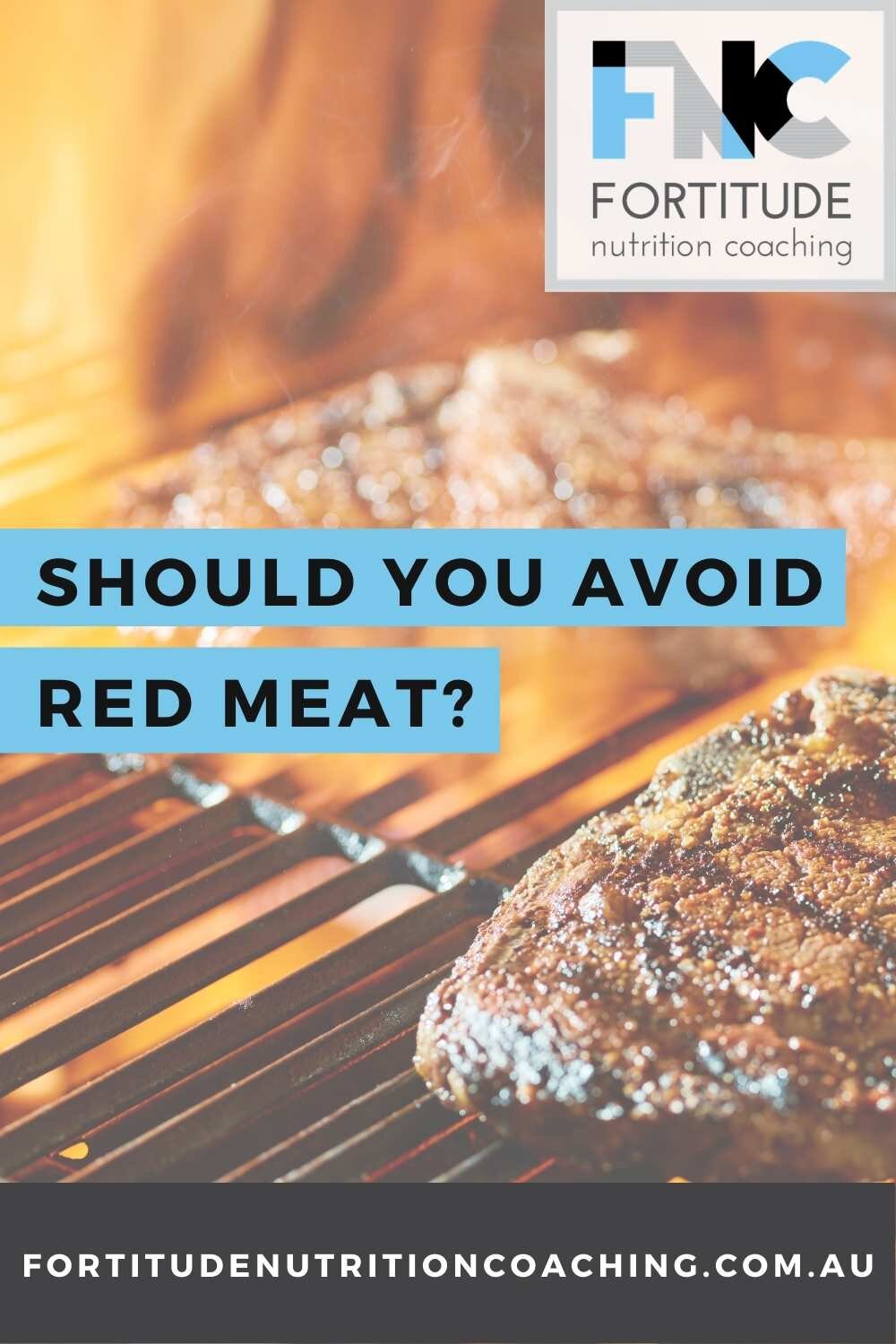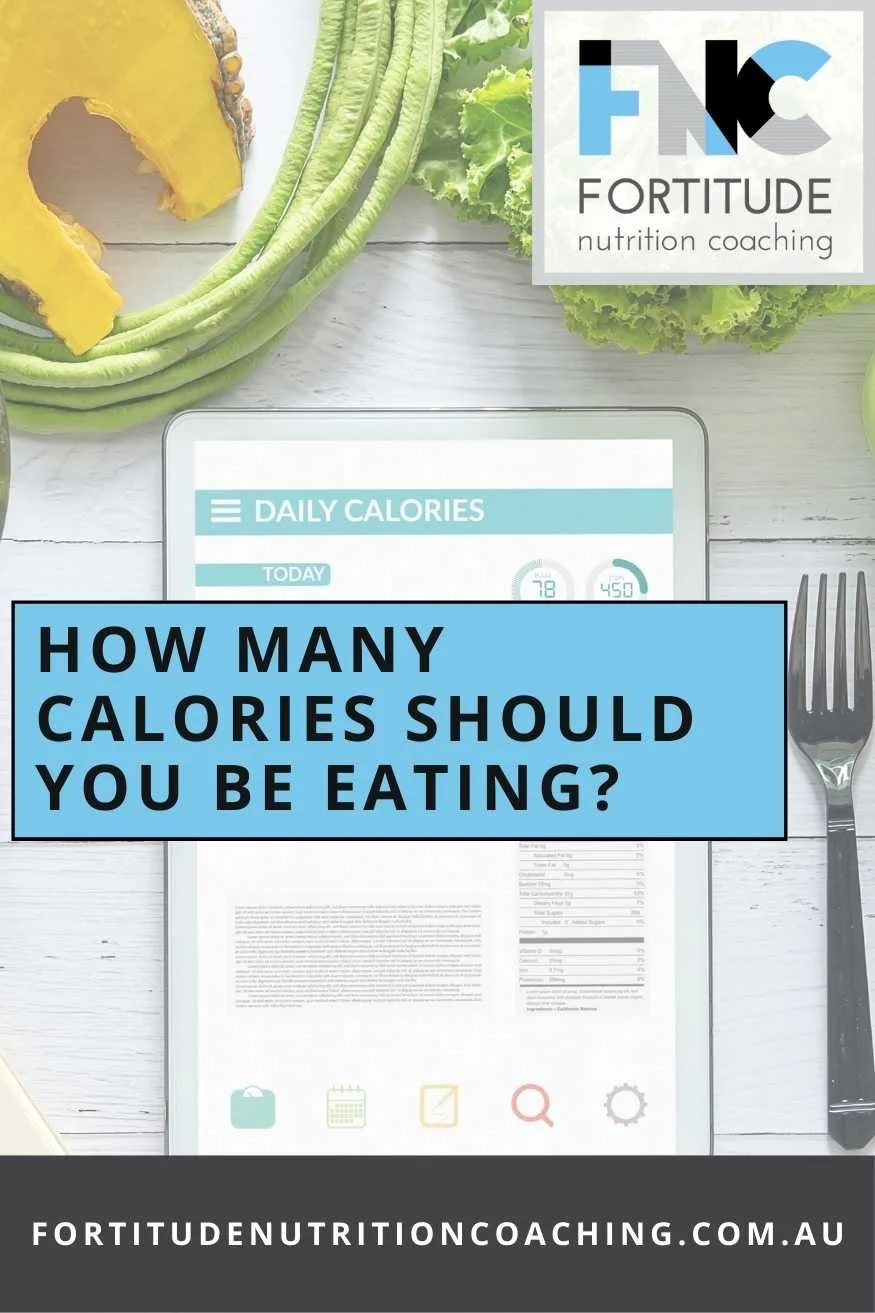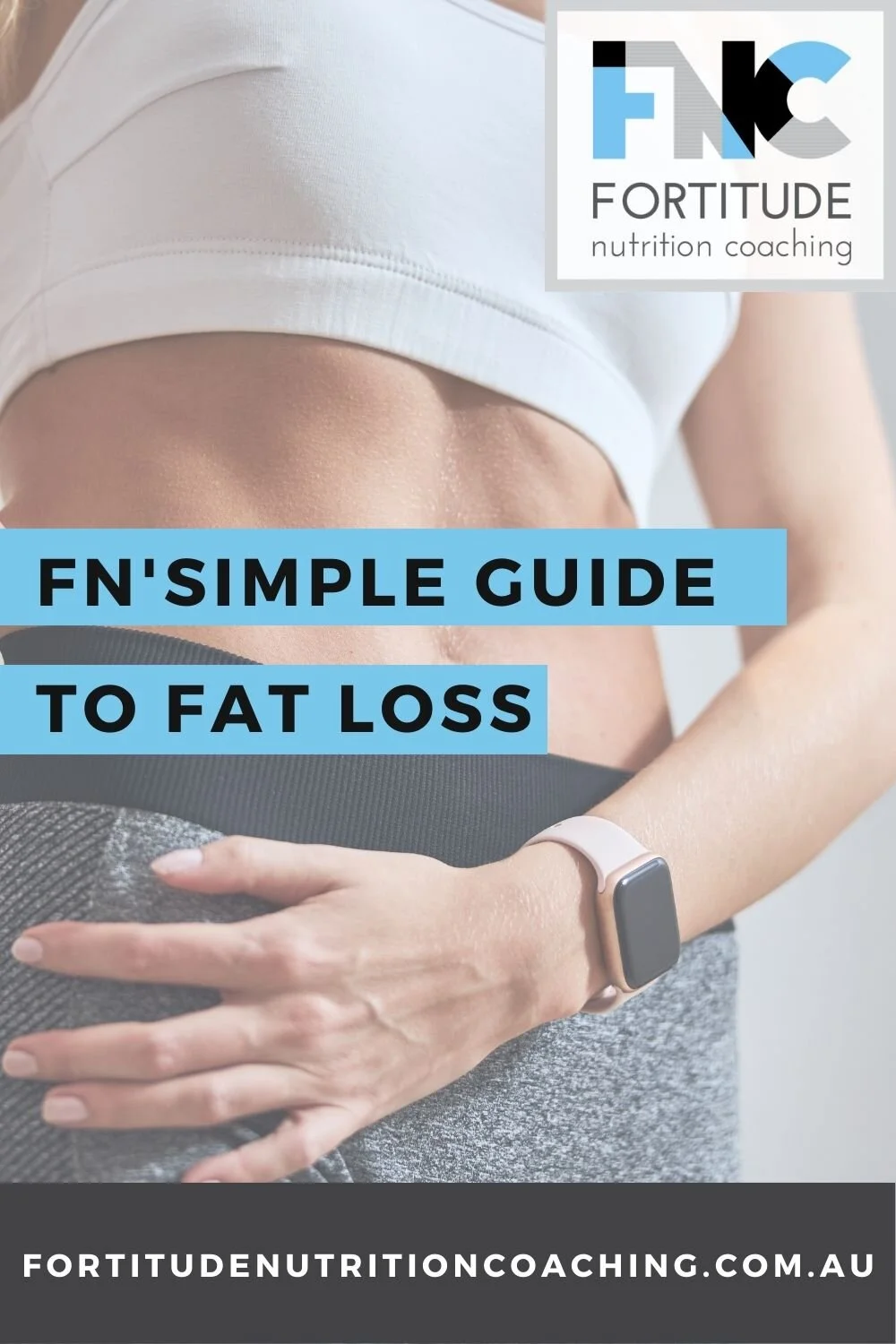Do the claims around red meat being "bad" have any legitimate backing, or is it just another example of fad dieting crap, where every food ‘under the sun’ suddenly becomes bad?
This blog discusses the known pros and cons of red meat consumption and how our personal values might influence the personal choice.
What is red meat?
The World Health Organisation defines meat as all ‘mammalian muscle meat’. The definition includes beef, veal, pork, lamb, mutton, horse, and goat [1]. Yes, that’s right, pork is technically defined as red meat even though it is not considered red meat for marking purposes in Australia [2].
There are three main subtypes of red meat
Not all red meat is created equal.
The type of red meat can influence health outcomes.
Due to a lack of separation in scientific literature it can be tricky to apply blanket statements to red meat as a whole [2].
1. Processed red meat.
Meats that have undergone additional processing in the form of salting, curing, fermenting can be defined as processed meats. Examples include sausages, ham, corned beef, salami and beef jerky. [1]
2. Fatty red meat
Unprocessed cuts of red meat that contain a high fat portion. This means more Calories and more saturated fat [2,7]. Examples include lamb shoulder and pork chops.
3. Lean red meat
What defines a ‘lean red meat’ in terms of fat percentage or composition is not well defined.
However, different mince products can provide objective thresholds.
Lean beef mince is described as <10% fat and extra lean beef mince is described as <5% fat.
‘Lean unprocessed meat’ refers to cuts of meat that are low in fat and cut straight from the animal without additional processing.
Fattier cuts of meat that have clearly defined portions of fat, allowing for easy fat removal/trimming can also be defined as ‘lean’. Examples include rump steak with fat trimmed, lamb backstrap, extra lean beef mince and kangaroo steaks.
Are there reasons to eat red meat?
Red meat can have many health benefits and can serve an important role in meeting recommended intakes of nutrients.
1. High quality protein
Red meat contains high biological value protein meaning the essential amino acids known to be ‘most powerful to muscle building are present [3].
If you are in the business of promoting muscle size and strength, animal-based protein foods provide the most ‘bang for your total protein buck’ [8].
The level of importance behind ‘protein quality’ can be debated especially for health and weight loss.
2. Can be a lean source of protein.
Depending on the cut, a high proportion of red meat is protein and not much of anything else (carbohydrates and fats).
For those seeking fat loss, achieving protein targets without going beyond total Calorie targets is easier if ‘lean protein foods’ are chosen. [3]
3. Micronutrients (heme iron, B12, magnesium and zinc)
Red meat also provides various essential vitamins and minerals, that all have roles in human function and promoting health [4,5].
Red meat presents the only commonly consumed whole food source of vitamin B12.
Without red meat, deficiency may be likely, and supplementation may be needed.
Nori /seaweed does provide dietary B12 which is an option for vegans, but is less abundantly consumed.
Iron is abundant in red meat, and many plant foods, however plant-based iron, referred to as “non-heme iron”, is comparatively poorly absorbed.
Thus, without red meat, it can be difficult to achieve iron adequacy.
Iron requirements vary greatly.
For many populations it is not difficult to satisfy iron requirements.
However, for menstruating females, especially menstruating female athletes, iron requirements can be elevated due to greater iron losses, meaning deficiency is more likely.
So, for such individuals, red meat may be super helpful in providing highly absorbable dietary iron.
Why do people eliminate or reduce red meat?
Whilst there are pros of consuming red meat, there are also cons, many of which are accurate or at least have grains of truth.
However, they’re often poorly interpreted and fail to consider context.
1. The environment and animal ethics
In terms of animal welfare, it’s really a personal thing and a discussion beyond the scope of this blog post.
The environmental impact and contribution of red meat to global warming has been investigated reasonably extensively.
A comprehensive 2018 paper [6] reviewed the environmental impact of various forms of farming and food production and found beef to be by far the greatest producer of greenhouse gas, both on absolute terms and relative to Calories yielded for human consumption.
Despite providing only 18% of Calories to the food supply, animal products use ~83% of the world farmland and contribute ~58% of food emissions [6].
Whilst impact can be reduced with conscious agricultural practice, even the lowest impact animal products exceeded the average impact of vegetable alternatives when protein production was matched [6].
The paper concluded that eliminating human consumption of animal foods would see a very profound reduction in the environmental impact of food production in an order of magnitude greater than 50% [6].
So, if you’re environmentally conscious, then at least reducing your red meat consumption is something to consider.
2. Red meat is carcinogenic.
Red meat was classified by the World Health Organisation as group 2A, ‘probably carcinogenic to humans’ and processed meat was classified as class 1 carcinogenic to humans, which is the same category as tobacco smoking and asbestos [1].
Understandably this has contributed to the notion that red meat is unhealthy amongst society.
However, before hard conclusions can be drawn, we must understand what these classifications mean.
Class 2A – (unprocessed red meat) The evidence is limited meaning a link has been identified but other confounding variables such as other lifestyle factors or even chance, cannot be ruled out as contribution factors.
Thus, it’s inappropriate to say “unprocessed red meat is carcinogenic”, but rather “a link is present”.
Class 1 – Processed meat: There is sufficient evidence to consider processed meat carcinogenic.
However, the classification does not infer the level of danger is the same as tobacco and asbestos, but rather the level of evidence is similar in terms of how robust it is, and how confident we can be about the conclusions drawn.
What’s the difference between processed meat and red meat?
Based on the above it can be concluded that consuming processed meat can harm long term health.
However, there is not enough evidence to say the same for unprocessed red meat with high certainty.
There are a few issues with the research on this topic.
Firstly, the definition of ‘red meat’ is not consistent across existing studies.
Unprocessed red meat and processed meat are often not separated which may cause conclusions to be drawn that are not correct for unprocessed meat.
In fact, research on red meat often includes meat within dishes such as pizza and lasagna [2].
If a paper that doesn’t separate processed and unprocessed meat finds negative health effects, by the time it trickles down to social media, all red meat gets a ‘bad’ label.
The Australian Dietary Guidelines also conclude that processed meats are harmful to human health, but we can’t be highly certain this also applies to unprocessed red meat [2].
Nevertheless, a link of red meat to colorectal cancer and renal cancer, was still discussed.
A consideration associated with the carcinogenicity is cooking method.
Red meat is typically cooked at higher temperatures with direct contact to open flame.
Steaks are pan fried or barbecued not steamed.
The crisp charring is often seen as ‘taste enhancing’.
This results in the production of additional carcinogenic chemicals.
However, currently there is insufficient evidence to know whether the cooking method does contribute to red meats possible link with cancer. [1]
3. People who eat red meat are not as healthy.
There is a decent amount of data that identifies links between meat consumption and a greater prevalence of poor long term health outcomes compared to populations or diets that omit meat [4,10].
The first question is why are those who eat red meat, not as healthy?
Is it because they eat red meat, or is it because on average those who omit red meat from their diet make healthier choices regarding their diet and lifestyle?
If people are more health seeking in their overall lifestyle and diet behaviours, they’ll be healthier long term regardless of whether red meat is eaten.
Most of the research showing links between poor health and red meat consumption is observational, meaning the findings are open to the influence of other lifestyle and diet variables.
This makes it tricky to conclude X definitely causes Y [2,4].
Observational research that controlled for other factors (age, weight, BMI, smoking, blood pressure, physical activity and nutritional parameters) does exist.
Poorer outcomes were still linked with red meat consumption [11].
This presents a strong case for red meat being independently causative of poor long-term health.
On the contrary, a comprehensive analysis of 36 randomised control trials (the gold standard of study methods) including ~1800 participants found no significant difference in lipid blood markers between red meat and comparison diets.
However, the time frame of the study is insufficient to show long term effects and lipid blood markers are just one variable [12].
So, a lot of the evidence is limited by methodology and findings are not perfectly consistent.
However, considering the number of observations, the number of human subjects involved, and the balance of findings, it is probable that even unprocessed red meat consumption does inflict negative effects on long term health, even though there is insufficient evidence to conclude causality (saying X causes Y).
4. Red meat is high in saturated fats
It is plausible that a decent proportion of health implications associated with red meat are not attributed to the muscle meat component itself, but rather the fat, more specifically the saturated fat [2,3].
Fat increases the palatability [9] or ‘deliciousness’ of foods as well as the Calorie density.
This means that we are likely to eat more of a given food and the Calorie yield per bite will also be greater.
This can lead to an excess in overall Calorie consumption, causing weight gain and associated health implications.
Saturated fat is the sub-type of fat that has been associated very strongly with poor long-term health such as cardiovascular disease [2,7].
Fortunately low fat or lean cuts of red meat exist and you can trim the fat off a fatty cut [3].
5. Red meat is acidic.
It must first be recognised that the PH of the blood, or ‘acidity’, is tightly internally regulated and cannot be changed based on what we eat, or we will die.
With that said, a diet that is highly acidic, that causes oxidative stress, can speed up the onset of chronic disease. [7]
The form of iron present in red meat has been said to cause this oxidative stress.
However, as mentioned, meeting the recommended intake of iron is important and something many struggle with.
So do we consume red meat to help get our iron, or do we sacrifice that because to reduce oxidative stress?
Luckily, we do not have to choose one or the other.
Ensuring a red meat containing diet includes plenty of fruits and vegetables probably provides the antioxidants to offset the oxidative stress [7].
So, in short, if you are eating plenty of plants, the acidic and oxidative nature of red meat becomes a moot point.
So is red meat health or unhealthy?
We cannot label a food as ‘good or bad’, ‘health or unhealthy’ until context, dose and situation has been considered.
Whether red meat is healthy or unhealthy is not a simple yes or no.
The answer rests heavily upon the how much, how often, and all other diet and lifestyle behaviours.
In certain instances, red meat may be pivotal in promoting health. For example, a menstruating female endurance athlete suffering from iron deficiency.
Too much of anything ‘good’ can become ‘bad’ and can even kill you. Heck, you can even die from drinking too much water!
In terms of red meat intake, this idea certainly applies.
The Australian Dietary Guidelines recommend a maximum of only 455g of meat per week for Australian adults [2].
So some red meat is at least okay, more than a little may result in undesirable long-term outcomes.
Logically, consuming small portions of processed meat infrequently probably will not cause any harm.
Any health effects of consuming small amounts of red meat can easily be superseded or offset by other diet and lifestyle factors.
Most people probably have ‘bigger fish to fry’.
If you take drugs from strangers and music festivals, sit on your bum all day at work, drink like a fish on the weekend, and don’t eat many plants, then you’re probably best off addressing those things before thinking about red meat.
Whether a diet is healthy or not really, doesn’t rest on the inclusion of one type of food. That is of course unless the quantities of a particular food consumed are really excessive.
The decision to eat red meat comes down to where your values sit. Taste preferences, animal ethics, environmental consciousness and how much you value convenience when it comes to achieving diet adequacy.
1 on 1 Nutrition Coaching with Fortitude Nutrition Coaching
Are you looking for an understanding and supportive human to talk with, to help with advice and guidance? An objective set of eyes to see what you could improve to move towards your goal in the easiest possible way?
We work with real people and get real results. Sign up for 1 on 1 Nutrition Coaching today and get the support, guidance and accountability of a Fortitude Nutrition Coach.
References:
[1] Who.int. 2015. Cancer: Carcinogenicity Of The Consumption Of Red Meat And Processed Meat. [online] Available at: <https://www.who.int/news-room/q-a-detail/cancer-carcinogenicity-of-the-consumption-of-red-meat-and-processed-meat> [Accessed 20 January 2021].
[2] National Health and Medical Research Council (2013) Australian Dietary Guidelines. Canberra: National Health and Medical Research Council.
[3] Wyness L. (2016). The role of red meat in the diet: nutrition and health benefits. The Proceedings of the Nutrition Society, 75(3), 227–232. https://doi.org/10.1017/S0029665115004267
[4] McAfee, A. J., McSorley, E. M., Cuskelly, G. J., Moss, B. W., Wallace, J. M., Bonham, M. P., & Fearon, A. M. (2010). Red meat consumption: an overview of the risks and benefits. Meat science, 84(1), 1–13. https://doi.org/10.1016/j.meatsci.2009.08.029
[5] Wolk A. (2017). Potential health hazards of eating red meat. Journal of internal medicine, 281(2), 106–122. https://doi.org/10.1111/joim.12543
[6] - Poore, J., & Nemecek, T. (2018). Reducing food's environmental impacts through producers and consumers. Science (New York, N.Y.), 360(6392), 987–992. https://doi.org/10.1126/science.aaq0216
[7] Omaye, A. T., & Omaye, S. T. (2019). Caveats for the Good and Bad of Dietary Red Meat. Antioxidants (Basel, Switzerland), 8(11), 544. https://doi.org/10.3390/antiox8110544
[8] Jäger, R., Kerksick, C.M., Campbell, B.I. et al. International Society of Sports Nutrition Position Stand: protein and exercise. J Int Soc Sports Nutr 14, 20 (2017). https://doi.org/10.1186/s12970-017-0177-8
[9] National Research Council (US) Committee on Technological Options to Improve the Nutritional Attributes of Animal Products. Designing Foods: Animal Product Options in the Marketplace. Washington (DC): National Academies Press (US); 1988. The Role of Fat in the Palatability of Beef, Pork, and Lamb. Available from: https://www.ncbi.nlm.nih.gov/books/NBK218173/
[10] Zeraatkar D, Han MA, Guyatt GH, Vernooij RWM, El Dib R, Cheung K, Milio K, Zworth M, Bartoszko JJ, Valli C, Rabassa M, Lee Y, Zajac J, Prokop-Dorner A, Lo C, Bala MM, Alonso-Coello P, Hanna SE, Johnston BC. Red and Processed Meat Consumption and Risk for All-Cause Mortality and Cardiometabolic Outcomes: A Systematic Review and Meta-analysis of Cohort Studies. Ann Intern Med. 2019 Nov 19;171(10):703-710. doi: 10.7326/M19-0655. Epub 2019 Oct 1. PMID: 31569213.
[11] - Battaglia Richi, E., Baumer, B., Conrad, B., Darioli, R., Schmid, A., & Keller, U. (2015). Health Risks Associated with Meat Consumption: A Review of Epidemiological Studies. International journal for vitamin and nutrition research. Internationale Zeitschrift fur Vitamin- und Ernahrungsforschung. Journal international de vitaminologie et de nutrition, 85(1-2), 70–78. https://doi.org/10.1024/0300-9831/a000224
[12] Guasch-Ferré, M., Satija, A., Blondin, S. A., Janiszewski, M., Emlen, E., O'Connor, L. E., Campbell, W. W., Hu, F. B., Willett, W. C., & Stampfer, M. J. (2019). Meta-Analysis of Randomized Controlled Trials of Red Meat Consumption in Comparison With Various Comparison Diets on Cardiovascular Risk Factors. Circulation, 139(15), 1828–1845. https://doi.org/10.1161/CIRCULATIONAHA.118.035225












Tired of the "eating healthy" cycle that leads nowhere? Our blog unveils the blueprint for success. Say goodbye to vague intentions and hello to a clear Action Plan. Transform your eating habits with precision - from veggies to protein, breakfast to overcoming obstacles. Break free from the loop and embark on a fulfilling journey. Ready to achieve your goals with confidence? 🎯 Learn more: https://www.fortitudenutritioncoaching.com.au/blog/why-healthy-eating-doesnt-work